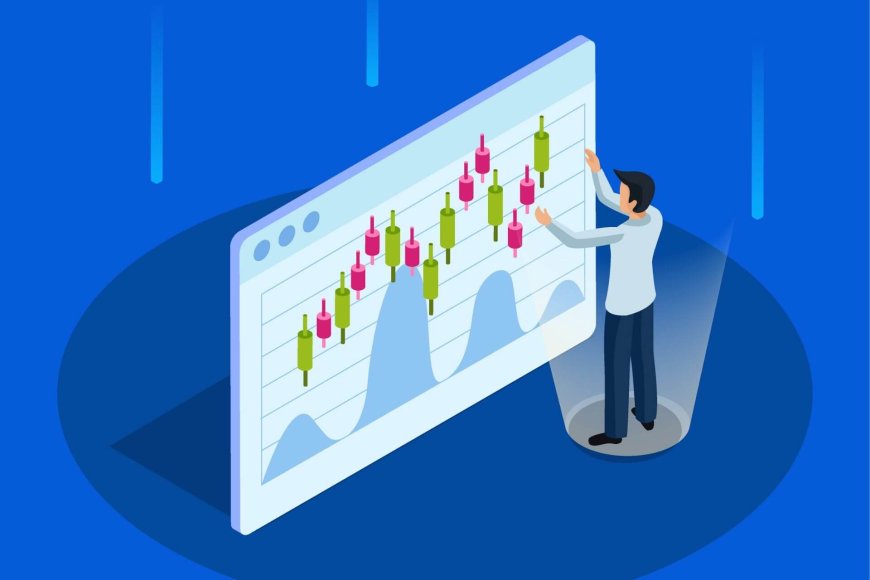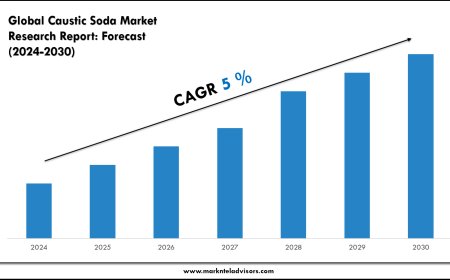Intraday Trading View vs Long-Term Charts: What’s the Difference?
Charting is not just a technical skill; it's a decision-making tool that can shape everything from entry and exit timing to risk management and portfolio structure.

Understanding how to read stock charts is essential for anyone looking to start their investment journey. Whether you're opening a share trading account or actively planning your first set of trades, knowing the difference between intrading view (intraday trading view) and long-term charts can significantly influence your strategy. Charting is not just a technical skill; it's a decision-making tool that can shape everything from entry and exit timing to risk management and portfolio structure.
What Is an Intraday Trading View?
An intraday trading view refers to the chart patterns and price movements of a stock or index within a single trading day. These charts are designed for short-term traders who need to make quick decisions based on fast-changing market conditions.
Common timeframes used in intraday charts include:
-
1-minute
-
5-minute
-
15-minute
-
1-hour
These charts give a real-time glimpse into market volatility and help traders respond instantly to price action. The tools commonly used in intraday charting include:
-
Volume Weighted Average Price (VWAP)
-
Relative Strength Index (RSI)
-
Moving Average Convergence Divergence (MACD)
-
Bollinger Bands
Intraday traders typically engage in strategies like scalping or day trading, aiming to take advantage of small price movements by entering and exiting positions within the same day. Mastering the intraday view requires sharp focus, strong risk control, and real-time analysis.
What Are Long-Term Charts?
Long-term charts display broader trends over weeks, months, or even years. These charts are better suited for investors and position traders who are not looking to benefit from small price fluctuations but instead want to ride larger market movements.
Timeframes commonly used in long-term charting include:
-
Daily
-
Weekly
-
Monthly
Popular indicators for long-term chart analysis include:
-
50, 100, and 200-day Moving Averages
-
MACD and RSI for trend confirmation
-
Fibonacci Retracement Levels
Long-term traders focus on the overall health of a company or sector and are more likely to integrate technical analysis with fundamental research. They use these charts to identify major support and resistance levels, long-term trend directions, and potential breakout patterns.
Intraday vs Long-Term: Key Differences
|
Factor |
Intraday View |
Long-Term Charts |
|
Timeframe |
Minutes to hours |
Days to years |
|
Trading Style |
Day Trading, Scalping |
Investing, Position Trading |
|
Decision Speed |
Fast-paced |
Strategic, Slow |
|
Indicators Used |
VWAP, RSI, MACD, Bollinger Bands |
MA, MACD, RSI, Fibonacci |
|
Market Focus |
Volatility, News Impact |
Trends, Earnings, Fundamentals |
|
Risk Profile |
High, Active Management |
Moderate to Low, Passive |
Intraday charts are ideal for individuals who want to leverage market volatility and can dedicate the time to watch charts continuously. Long-term charts are preferred by those who want a more passive approach, with trades held for weeks or months.
Pros and Cons of Each Approach
Pros of Intraday Trading View:
-
High potential for quick profits
-
Frequent trading opportunities
-
Responds well to technical setups and news
Cons of Intraday Trading View:
-
Emotionally and mentally demanding
-
Higher brokerage and transaction costs
-
Requires significant time commitment
Pros of Long-Term Chart Analysis:
-
Less stressful and time-intensive
-
Suitable for portfolio building
-
Capitalizes on macroeconomic trends
Cons of Long-Term Chart Analysis:
-
Slower to react to short-term opportunities
-
May experience drawdowns in volatile markets
-
Limited trades, which may reduce profit frequency
Choosing the Right Chart Based on Your Goals
The ideal charting approach depends on your financial goals, risk tolerance, and time availability. Heres how you can decide:
-
If youre a full-time or active trader looking for daily opportunities, an intraday trading view is essential. Youll benefit from detailed, minute-level insights to time your entry and exit points effectively.
-
If you're a long-term investor, focused on building wealth gradually, then long-term charts offer more stability. You can use them to identify major trend reversals and evaluate company performance over time.
Some traders even combine both approaches. For example, long-term charts can help you identify a stock worth trading, while intraday charts can guide you on the precise timing of your trade.
Tools and Platforms for Both Chart Types
Whether you're examining intraday views or long-term charts, the right platform can make all the difference. Look for platforms that offer:
-
Real-time charting capabilities
-
Customizable timeframes
-
Technical indicators and drawing tools
-
Multi-device access (mobile, desktop)
Platforms that support advanced charting are particularly useful for traders engaged in:
-
Equities
-
Futures and Options
-
Commodities
-
Algo trading
These tools are essential for users of services like Mastertrust, which caters to a diverse set of traders and investors. From short-term speculators to long-term wealth builders, having access to the right platform features empowers smarter decision-making.
Conclusion
Understanding the difference between intraday trading view and long-term charting is crucial for optimizing your trading strategy. Both serve different purposes and are suited to different types of traders. If you're opening a share trading account, its essential to first identify your trading goals and risk appetite, and then choose the charting approach that complements them.
While intraday charts provide granular data perfect for active trading, long-term charts give a birds-eye view of market trends, ideal for strategic investing. The best results often come from combining insights from both, enabling a balanced and informed trading journey in todays dynamic markets.










































